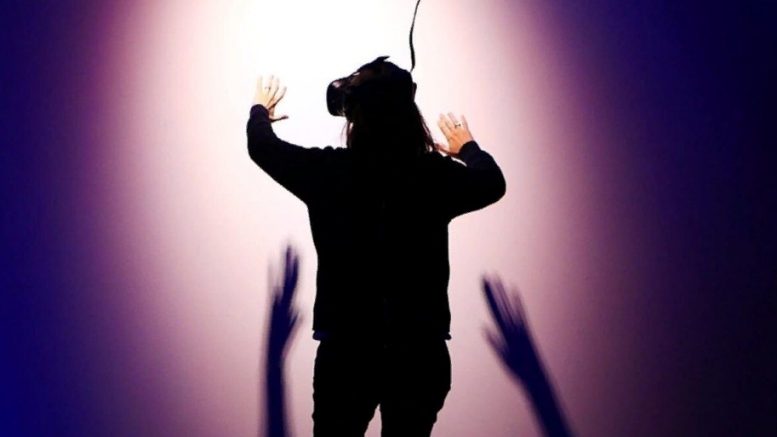According to a group of Penn State researchers, virtual reality (VR) may provide nutrition educators and dietitians a totally new way to deliver practical lessons on healthy eating.
In one study, students were exposed to both a regular lecture and an interactive VR session in which they learned about nutrition. The study also revealed that for those lessons to be successful, nutrition educators may not even require all the VR interactivity’s bells and whistles.
According to the research, nutrition educators can use immersive and conventional VR settings for online learning. According to Travis Masterson, a member of the Institute for Computational and Data Sciences and the Broadhurst Career Development Professor for the Study of Health Promotion and Disease Prevention, it might result in a more scalable way to create and disseminate nutrition lessons, including ones on portion control.
According to Masterson, who is also the director of the Health, Ingestive Behavior and Technology Laboratory, “One thing that comes up in nutrition is that there is a lot of time spent on education and, as education professionals, we try to provide very simple information to people, but that might not be the most effective way.”
“The greatest way to learn about food is by doing it yourself and interacting with it.” For instance, just because you’re watching a cooking show doesn’t mean you can start cooking right now. You must have some practical experience. As a result, in this instance, we weren’t attempting to impart cooking skills but rather some basic culinary principles.
The team developed an interactive space where students could engage in hands-on, virtually speaking, food experiences to learn about portion control in virtual reality, a technology that creates a virtual 3D environment for the user. They also developed a lecture-based lesson that was intended to mimic how an instructor would teach a real-world class.
Students learnt roughly the same in both situations, contrary to the researchers’ expectations that they would do better in the interactive version of the experiment.
Pejman Sajjadi, a postdoctoral researcher at the Center for Immersive Experiences and the paper’s primary author, claims that the enhanced learning with or without interactivity may be due to VR’s capacity to elicit embodiment and presence—the sensation that one is in a body occupying an actual environment.
We conducted this study under the assumption that the affordance of virtual reality—the naturalness of the interactivity that is facilitated by VR, the degree to which it matches what we do in real life—would have a significant influence on the response, according to Sajjadi.
However, when we altered the affordance of interaction, in a sense, we neglected to take into consideration the alteration of presence and the sensation of embodiment, which are essentially the same in both contexts.
The participants are wearing the headset and experience being transported to an alternate universe in both the interactive and passive settings. Our findings do, however, indicate that both groups in both scenarios significantly increase their conceptual understanding. “
According to the researchers, the study suggests that virtual reality, whether interactive or not, may be a useful tool for teaching students about portion control. For people to eat healthily, they must learn the importance of portion control and how it relates to consuming dense meals, or foods that are high in nutrition yet low in calories.
According to “viable statistics,” people of all ages prefer to consume more food when given more of it, according to Masterson. Accordingly, it is hypothesized that people typically consume the same quantity of food in terms of weight but not in terms of calories.
We want individuals to consume more food while consuming fewer calories. This educational material aims to show people that not all of their favorite foods need to be restricted. Instead, you should consume less of it and give yourself more low-energy-dense foods. “
While the results indicate that students could learn in virtual environments, Masterson added that additional research would be required to determine how virtual reality stacks up against traditional, real-world classrooms’ portion control training.
Meetings with dietitians are currently used as a method, frequently accompanied by written materials and PowerPoint presentations. Despite the fact that this strategy may be successful, the researchers believe it will be challenging to expand due to the scarcity of dietitians in some areas and the high expense of numerous sessions.
In the study, 45 virtual reality users who downloaded an app that taught users about food energy density and portion control were enrolled in the study. Participants in the interactive version might use a virtual knife to cut food items and virtual hands to grab and construct meals in accordance with calorie goals.
During the session, the participants in the interactive version could also hear instructions from a dietician. Participants in the passive version listened to a computerized dietitian teach them about portion size and energy density.
The researchers noted that in the future, they may delve more deeply into how presence and embodiment impact learning in virtual environments and examine whether the knowledge attained there will result in altered behavior in the real world.
The use of VR technology for nutrition instruction is just getting started, they add, and it is unclear how VR lessons stack up against traditional ones.
“I was extremely delighted that we touched on an important topic in this project, and I think the potential of virtual reality can even alter the field of nutrition education,” stated Sajjadi.





